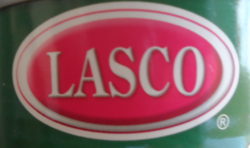Data from the Statistical Institute of Jamaica (Statin) is confirming what Jamaicans already know — the economy suffered a decline in the first quarter of 2013. According to the government body charged with the collection and compilation of data, the economy declined by 1.3 percent in the first quarter of 2013 compared to the similar quarter of 2012. The sectors that made a big dent to the economic performance were Agriculture, Forestry & Fishing industry which declined by 11.4 per cent, Mining & Quarrying industry which fell by 9.1 per cent. These of course were not the only sectors to suffer reduced output.
The report indicated decreased output in both the Goods Producing and Services industries which fell by 4.5 per cent and 0.1 per cent respectively. Continued macroeconomic challenges in the economic environment as well as the lingering effects of Hurricane Sandy, which affected the island in October 2012, were the factors posted by Statin for the poor performance of the sectors and the negative economic performance in the first quarter.
 The Manufacturing sector declined by 1.6 per cent but there was improved performance in the Construction industry which grew by 0.7 per cent. There was mixed performance within the Services industries. Increased output was recorded by Transport, Storage and Communication (0.6 per cent), Finance and Insurance Services (0.2 per cent), Real Estate, Renting & Business Activities (0.4 per cent) and Other Services (0.1 per cent). Industries that experienced lower levels of output were Electricity & Water Supply (-3.0 per cent), Hotels and Restaurants (-2.3 per cent) and Producers of Government Services (-0.1 per cent). The Wholesale & Retail Trade, Repairs, Installation of Machinery & Equipment remained unchanged.
The Manufacturing sector declined by 1.6 per cent but there was improved performance in the Construction industry which grew by 0.7 per cent. There was mixed performance within the Services industries. Increased output was recorded by Transport, Storage and Communication (0.6 per cent), Finance and Insurance Services (0.2 per cent), Real Estate, Renting & Business Activities (0.4 per cent) and Other Services (0.1 per cent). Industries that experienced lower levels of output were Electricity & Water Supply (-3.0 per cent), Hotels and Restaurants (-2.3 per cent) and Producers of Government Services (-0.1 per cent). The Wholesale & Retail Trade, Repairs, Installation of Machinery & Equipment remained unchanged.
When compared with the fourth quarter of 2012, the real value added declined 0.5 per cent. Both the Goods Producing and Services industries recorded lower levels of output. The Goods Producing industries declined by 1.4 per cent while the Services industries declined by 0.2 per cent.





















